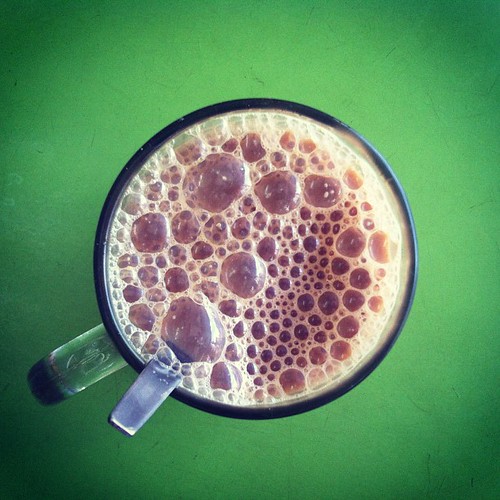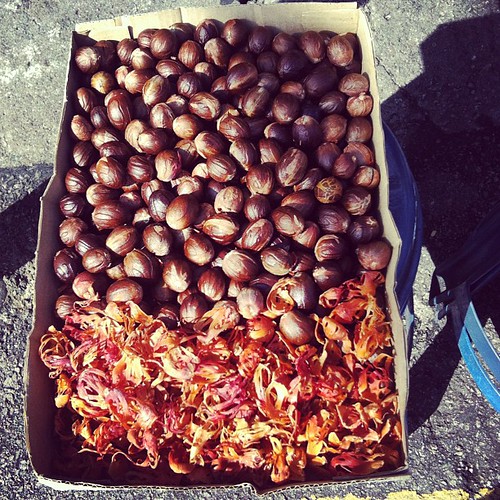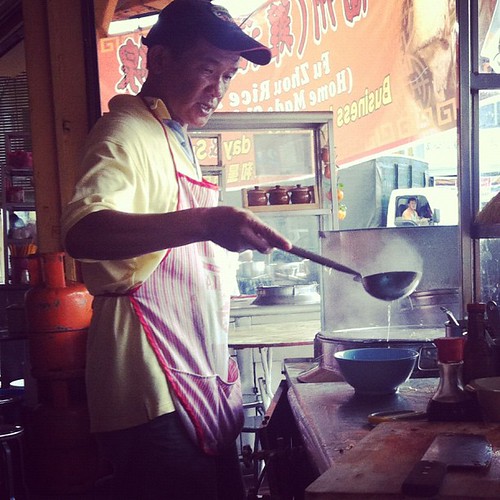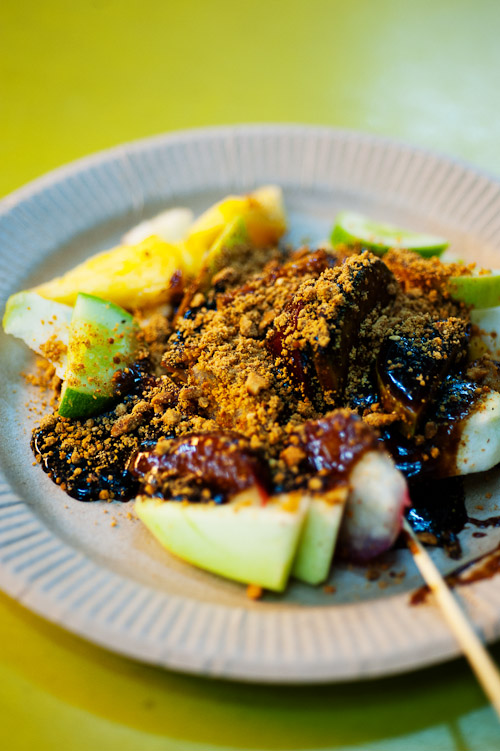 If you follow Asian cooking websites, you're most likely already familiar with Rasa Malaysia, maintained by native of Penang, Bee Yinn Low. In fact, Bee and I started our respective blogs around the same time, and early on, she used to write me with questions about basic camera skills and Photoshop technique. Today, her website gets a bazillion hits a day and she's even written and photographed a best-selling book. This obsession with food appears to be a family thing, as her brother, CK, although he hasn't got into the blogging game, conducts food-based tours of Penang. With the kind help of these two more-than-capable guides, I was escorted around the restaurants, stalls, hakwer centres, factories, shops and farms of George Town and Penang. It was a virtual crash-course in Malaysian food, and as we ate at more places than I have space to go into here, I thought I'd share some of the highlights.
If you follow Asian cooking websites, you're most likely already familiar with Rasa Malaysia, maintained by native of Penang, Bee Yinn Low. In fact, Bee and I started our respective blogs around the same time, and early on, she used to write me with questions about basic camera skills and Photoshop technique. Today, her website gets a bazillion hits a day and she's even written and photographed a best-selling book. This obsession with food appears to be a family thing, as her brother, CK, although he hasn't got into the blogging game, conducts food-based tours of Penang. With the kind help of these two more-than-capable guides, I was escorted around the restaurants, stalls, hakwer centres, factories, shops and farms of George Town and Penang. It was a virtual crash-course in Malaysian food, and as we ate at more places than I have space to go into here, I thought I'd share some of the highlights.
On our first morning we met at the busy morning market at Pulau Tikus, just east of George Town. There, we tried a whole lot of tasty stuff, but perhaps the most interesting to me were the dishes prepared by two friendly vendors selling Nyonya food:
Nyonya is a blend of Chinese and Southeast Asian cooking styles and ingredients and is a cuisine I'd read about, but hadn't yet tried myself. At one stall I tasted the famous curry kapitan (a rich chicken curry using coconut milk), a seriously tasty nasi ulam (a rice 'salad' similar to the southern Thai khao yam) and perut ikan (a thick soup using salted fish kidney -- tai plaa in Thai) -- dishes which seemed to vary in flavour between rich/salty and tart/herbal. I particularly liked one vendor's gulai kiam hu kut, a rich curry that gets its salty flavour from fish bone.
After tasting dishes at a few more stalls, we grabbed a table and Bee snagged a couple packets of rempah udang, an amazing Nyonya snack of grilled sticky rice surrounding a savoury, spicy (think pepper and coriander) and shrimpy centre:
Moments later, a bowl of curry mee arrived:
Like other versions, the bowl held both rice and egg noodles, soft tofu, blood, cockles and shrimp, but this vendor's version was among the spiciest dishes I'd encountered on Penang. CK explained that the shop's broth is actually relatively bland, and the dish gets its spice and smoke from a generous dollop of chili paste, added at the last minute:
Every good breakfast needs a dessert, so naturally we spent the remainder of our time at the market eating sweet stuff, including apom, a type of sweet pancake, from this cheeky vendor:
Pulau Tikus Market Jalan Burma, Georgetown, Penang
View Thai Eats in a larger map
In fact, I was pleasantly surprised by nearly all of the sweets I encountered on Penang, as they weren't nearly as sugary as their Thai counterparts. In particular, George Town seemed to have a variety of slightly sweet pancake-like dishes such as apom balik, a soft, eggy, a slightly sweet Nyonya pancake filled with sliced banana or corn:
Apom Chooi Jalan Burma (near Union School), Georgetown, Penang 1.30-8pm Mon-Sat
View Thai Eats in a larger map
and ban chean kuih, a light, crispy pancake filled with ground peanuts and sugar, giving it a flavour and texture that reminded me of the Thai sweet, khanom tup tap.
But it was really the savoury stuff I enjoyed the most. CK took me to Thin Seng Sauce Factory, a 100 year-old soy sauce factory in the middle of Georgetown:
We were offered a taste directly from the vats, and far from being just salty, the soy sauce was virtually meaty, with just a touch of sweet:
Thin Seng Sauce Factory 18, Kampung Malabar, George Town, Penang, Malaysia
View Thai Eats in a larger map
This was followed by a bowl of koay teow th'ng, rice noodles and fish balls in a clear broth (pictured at the top of this post), at Pitt Street Koay Teow Th'ng. A bowl here combines tender and delicious fish dumplings made on-site by hand, a rich duck-based broth, and to bring it all together, a splash of pork fat and crispy garlic. Quite possibly one of the standout bowls of noodles I've encountered in Southeast Asia.
Pitt Street Koay Teow Th'ng Lebuh Carnarvon, Georgetown, Penang, Malaysia Breakfast & lunch
View Thai Eats in a larger map
And the lard didn't stop there; virtually across the street is Kedai Kopi Seng Thor, where the crispy and delicious oyster omelet:
like many old-school Chinese dishes in Georgetown, is fried in lard. Such rich lard, in fact, that the dish had an almost bacon-like flavour:
Kedai Kopi Seng Thor Cnr Lebuh Kimberley & Lebuh Carnarvon, Georgetown, Penang, Malaysia
View Thai Eats in a larger map
If you find yourself in Penang, consider doing one of CK's food-based tours of the island. Alternatively, if you want to recreate the dishes of Penang in your own home, check out this page at Rasa Malaysia.



















































